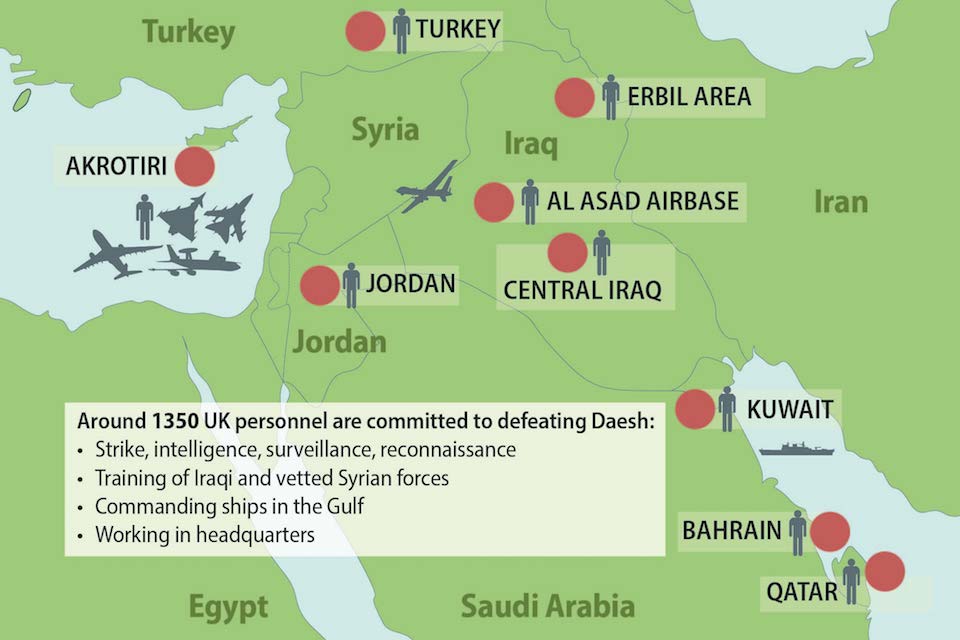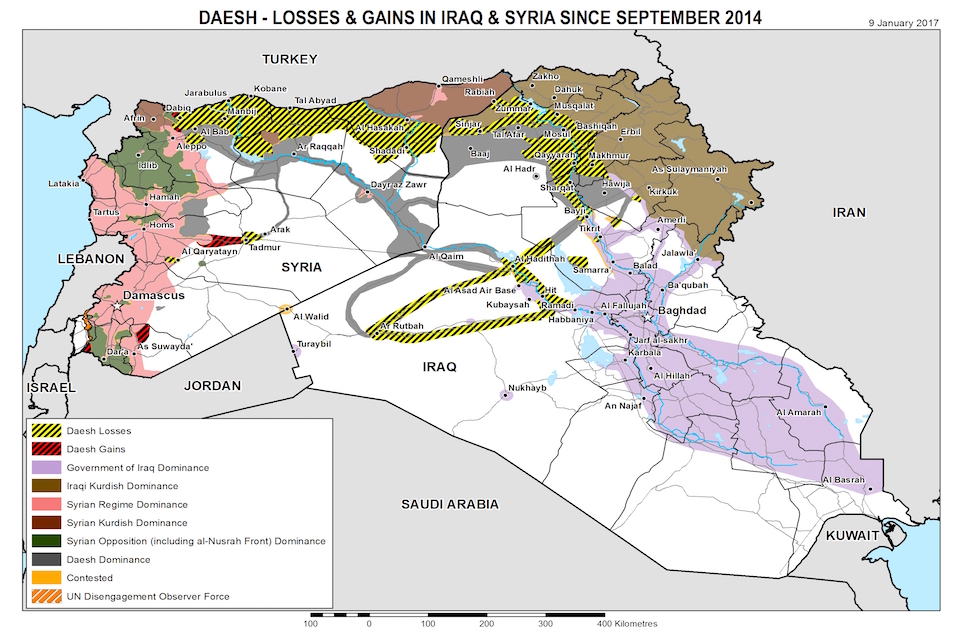The RAF are continuing to take the fight to Daesh in Syria.
Summary
- Tuesday 12 March – Typhoons supported the Syrian Democratic Forces attacking Daesh in Baghuz Fawqani, striking dispersed terrorist positions, and destroying a large truck-bomb.
- Sunday 17 March – Typhoons destroyed a building in Baghuz Fawqani, from which Daesh were engaging the Syrian Democratic Forces at close range.
- Monday 18 March – a Reaper killed two terrorists in a trench at Baghuz Fawqani, while Typhoons struck four other Daesh positions.
Detail
Royal Air Force aircraft, alongside other coalition partners, have continued to provide close air support to the Syrian Democratic Forces as they attacked the last remaining Daesh stronghold in eastern Syria, at Baghuz Fawqani. Typhoon, Reaper and Sentinel aircraft have flown daily reconnaissance missions, with the Typhoons and Reapers ready to engage targets if requested by the SDF. On Tuesday 12 March, the SDF came into contact with Daesh in dispersed positions, and two Typhoon FGR4s conducted a series of three attacks, using a total of four Paveway IV guided bombs, which successfully silenced the terrorists’ fire. In addition, a large number of vehicles had been abandoned in the area of the fighting, and one large truck in their midst was identified as booby-trapped with an improvised explosive device. The Typhoons were able to pick out and safely destroy this truck-bomb with a single Brimstone 2 missile.
Typhoons conducted a further attack on Sunday 17 March when the SDF came under fire at close range from a building held by Daesh in Baghuz Fawqani. The proximity of the SDF to the target required particular careful targeting by the Typhoons’ pilots, but a single Paveway IV demolished the terrorist position with great accuracy.
The crew of a Reaper observed two terrorists, who were attempting to conceal their weapons under heavy cloaks, taking up position in a trench at Baghuz Fawqani on Monday 18 March, and successfully engaged them with a Hellfire missile. Typhoons were also patrolling the area, and they conducted an attack which struck four dispersed Daesh positions simultaneously with Paveway IVs.
UK contribution to the fight against Daesh

Campaign against Daesh

Previous update
The Royal Air Force has struck two key targets, as the UK supports the Syrian Democratic Forces (SDF) who are working to clear Daesh from their last small pocket of territory.
British aircraft have delivered air attacks to assist the SDF with operations on the ground, while conducting daily reconnaissance missions around Baghuz, eastern Syria. Coalition aircraft also remain available to assist the Iraqi security forces as necessary, to prevent Daesh from re-establishing a presence in the country.
On Thursday 21 February, two Typhoons were tasked with an attack on a cave in northern Iraq where a group of terrorists had been spotted, some ten miles east of Tal Afar. Coalition surveillance aircraft carefully checked the surrounding countryside for any civilians who might be placed at risk, before the Typhoons used two Paveway IVs to collapse the entrance to the cave.
A Reaper provided close air support to the Syrian Democratic Forces as they fought Daesh around Baghuz Fawqani on Saturday 2 March. The Reaper’s crew observed a rocket-propelled grenade being fired from a building, and shortly afterwards a small group of armed terrorists emerged. They were tracked by the Reaper, whilst careful checks were made that no SDF or otherwise unidentified individuals were too close to them, then successfully engaged with a single Hellfire missile.
Details of previous airstrikes can be found here.
For more information see Daesh: UK government response page on GOV.UK









